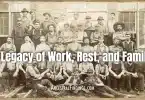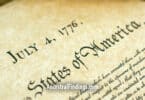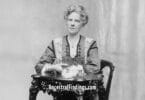Origins of the Ku Klux Klan
The Ku Klux Klan (KKK) was founded in 1865 in Pulaski, Tennessee, by six Confederate veterans of the American Civil War. Originally conceived as a social club for former soldiers, it quickly transformed into an organization advocating white supremacy, using terror and violence to oppose Reconstruction efforts and the newly gained rights of African Americans. The founders included John C. Lester, John B. Kennedy, James R. Crowe, Frank O. McCord, Richard R. Reed, and J. Calvin Jones. These men saw the Klan as a means to regain control in a rapidly changing South and reassert white dominance in the post-war period.
Motivations Behind the Formation
The motivations for creating the Klan were deeply rooted in the social and political upheaval following the Civil War. Several factors contributed to the Klan’s emergence:
- Loss of Power and Status: The end of the Civil War and the abolition of slavery dramatically altered the social and economic structure of the South. Formerly enslaved African Americans were now free citizens with rights, which threatened the established social hierarchy. Many white Southerners, particularly those who had been part of the Confederate cause, felt a profound sense of loss and humiliation. The Klan offered a way to reclaim a sense of power and control.
- Fear of Social Change: Reconstruction brought significant changes, including the establishment of schools for African Americans, the granting of voting rights, and the election of African Americans to public office. These developments were seen as direct challenges to white supremacy and provoked fear and resentment among many white Southerners. The Klan emerged as a reactionary force against these changes, aiming to restore the old social order.
- Economic Anxiety: The Southern economy was devastated by the war, and the transition from a slave-based economy to one with free labor was tumultuous. White landowners and former slaveholders faced economic uncertainty and competition from newly freed African Americans. The Klan used violence and intimidation to suppress African Americans and limit their economic opportunities, hoping to maintain economic dominance.
- Racial Hatred and Superiority: Deep-seated racial prejudices and beliefs in white superiority fueled the Klan’s actions. The organization tapped into these sentiments to justify its campaign of terror and to rally support among white Southerners who shared these views.
Founders and Early Activities
The founders of the Klan, including notable figures such as Nathan Bedford Forrest, who became the first Grand Wizard, created the Klan as a secret society. Their activities soon expanded beyond social gatherings to include intimidation and violence against freedmen and their allies. They donned white robes and hoods, a tactic to disguise their identities and instill fear among their targets.
The Klan’s early activities were marked by a combination of ritualistic pageantry and brutal violence. Members engaged in night rides, during which they would visit the homes of African Americans, Republican leaders, and other targets to threaten, beat, and sometimes kill them. These actions were intended to undermine Reconstruction efforts, discourage African Americans from voting, and restore white dominance.
The First Dissolution
The Klan’s reign of terror was short-lived, as federal legislation and military intervention under President Ulysses S. Grant severely weakened the organization. The Enforcement Acts of 1870 and 1871, also known as the Ku Klux Klan Acts, were designed to protect African Americans‘ rights to vote, hold office, serve on juries, and receive equal protection under the laws. These acts empowered the federal government to intervene directly, leading to the prosecution of Klan members and a significant reduction in their activities. By the mid-1870s, the Klan was largely dismantled.
President Grant’s administration made it clear that such violent organizations would not be tolerated. The use of federal troops to enforce the law and the establishment of military tribunals to try Klan members sent a strong message. The combination of legal action and military force was effective, and by 1872, the Klan had virtually disappeared.
The Revival in the 20th Century
The Klan resurfaced in 1915, spurred by the release of D.W. Griffith’s film “The Birth of a Nation,” which glorified the original Klan and depicted African Americans in a derogatory manner. This second wave of the Klan expanded its targets to include not only African Americans but also immigrants, Catholics, Jews, and other groups deemed “un-American.” At its peak in the 1920s, the Klan boasted millions of members and held significant political power, particularly in the Midwest and South.
The new Klan was different from its predecessor in several ways. It was a nationwide organization, and its rhetoric now included a broader range of prejudices. The Klan capitalized on the social and economic tensions of the time, using fear and propaganda to gain influence. They held rallies, parades, and public ceremonies to attract members and intimidate their targets.
Presidential Opposition and Decline
Presidential actions played a crucial role in curbing the influence of the Klan. President Warren G. Harding publicly denounced the Klan in the early 1920s, though he stopped short of calling for direct action against them. It was during the administration of President Franklin D. Roosevelt that the federal government took more decisive steps. The New Deal programs and the establishment of the Civil Rights Section of the Department of Justice in the late 1930s provided mechanisms to combat Klan violence more effectively.
Roosevelt’s administration recognized the threat posed by the Klan and took steps to weaken its power. The New Deal policies aimed at improving the economic conditions of all Americans, which indirectly undermined the Klan’s message of hate. Additionally, the federal government began to more actively investigate and prosecute Klan members for their crimes, further diminishing their influence.
Post-World War II Resurgence and Civil Rights Era
After World War II, the Klan saw a brief resurgence fueled by opposition to the civil rights movement. Violent acts, including bombings and murders, were committed by Klan members in an attempt to thwart desegregation and maintain white supremacy. The federal response, particularly under Presidents Lyndon B. Johnson and John F. Kennedy, was marked by a more aggressive stance. The Civil Rights Act of 1964 and the Voting Rights Act of 1965 provided legal frameworks to challenge and dismantle the Klan’s power.
During the Civil Rights era, the Klan’s violent actions were met with strong federal responses. The FBI, under J. Edgar Hoover, infiltrated the Klan and gathered intelligence that led to numerous arrests and prosecutions. The efforts of civil rights activists, combined with the federal government’s determination to uphold the law, significantly weakened the Klan.
Modern-Day Klan and Its Legacy
In recent decades, the Klan’s influence has waned significantly, though it still exists in various splinter groups. Today’s Klan is a shadow of its former self, largely due to societal changes, legal actions, and the efforts of civil rights organizations. The group’s legacy, however, remains a dark stain on American history, serving as a reminder of the dangers of hatred and intolerance.
The modern Klan is fragmented and lacks the widespread support it once enjoyed. However, its existence serves as a reminder that the fight against racism and bigotry is ongoing. Civil rights organizations continue to monitor and counter the activities of hate groups, ensuring that they do not regain the power they once had.
Interesting Tidbits and Lesser-Known Facts
- Nathan Bedford Forrest’s Later Years: After serving as the first Grand Wizard, Nathan Bedford Forrest distanced himself from the Klan and even called for its dissolution in 1869, expressing regret over its violent methods.
- Political Influence: In the 1920s, the Klan held significant political power, with members elected to local, state, and federal offices. Indiana’s governor, Edward Jackson, and Oregon’s governor, Walter M. Pierce, were among those with Klan affiliations.
- Impact of Popular Culture: “The Birth of a Nation” was screened at the White House for President Woodrow Wilson, whose reputed endorsement of the film (though later disputed) gave it legitimacy and helped fuel the Klan’s revival.
- Klan Robes and Symbols: While commonly associated with the Klan, the iconic white robes and burning crosses were not originally part of their repertoire. The burning cross was adopted from Scottish traditions and popularized during the 20th-century revival.
- FBI Infiltration: During the Civil Rights era, the FBI, under J. Edgar Hoover, infiltrated Klan groups through the COINTELPRO program, leading to significant intelligence gains and subsequent prosecutions of Klan members.
Conclusion
The history of the Ku Klux Klan is a chilling chronicle of how hatred and bigotry can take root and thrive in a society. Yet, it also highlights the resilience and determination of those who stood against it. From the courageous African Americans and their allies during Reconstruction to the civil rights activists of the 20th century, the fight against the Klan has been a testament to the enduring struggle for justice and equality in America. The Klan’s history is a stark reminder of the importance of vigilance in protecting civil rights and promoting tolerance and understanding in society.
Here are some recommended books on the history of the Ku Klux Klan that you can find on Amazon:
This book provides a detailed account of the Klan’s activities in the 1920s and the story of the individuals who fought against them. It’s a compelling read that offers both historical context and personal stories.
“Hooded Americanism: The History of the Ku Klux Klan” by David M. Chalmers
Chalmers’ book is a comprehensive history of the Klan from its inception to its presence in modern America. It covers the organization’s origins, growth, and the various periods of its resurgence.
“The Ku Klux Klan in the Heartland” by James H. Madison
This book focuses on the Klan’s influence in the Midwest, particularly during the 1920s. Madison examines how the Klan’s ideals were propagated and their lasting impact on American society.
“The Fiery Cross: The Ku Klux Klan in America” by Wyn Craig Wade
Wade’s book is an in-depth analysis of the Klan’s history, examining its political, social, and cultural impact. The book thoroughly explores the Klan’s activities and its legacy in American history.
“Ku Klux Klan: A History of Racism and Violence” by John Turner
This book offers a concise history of the Klan, focusing on its role in promoting racism and violence throughout its existence. It’s useful for understanding the Klan’s persistent influence on American society.
These books provide various perspectives on the Klan’s history, motivations, and impact on American society. They are valuable resources for anyone looking to understand this dark chapter in American history.






